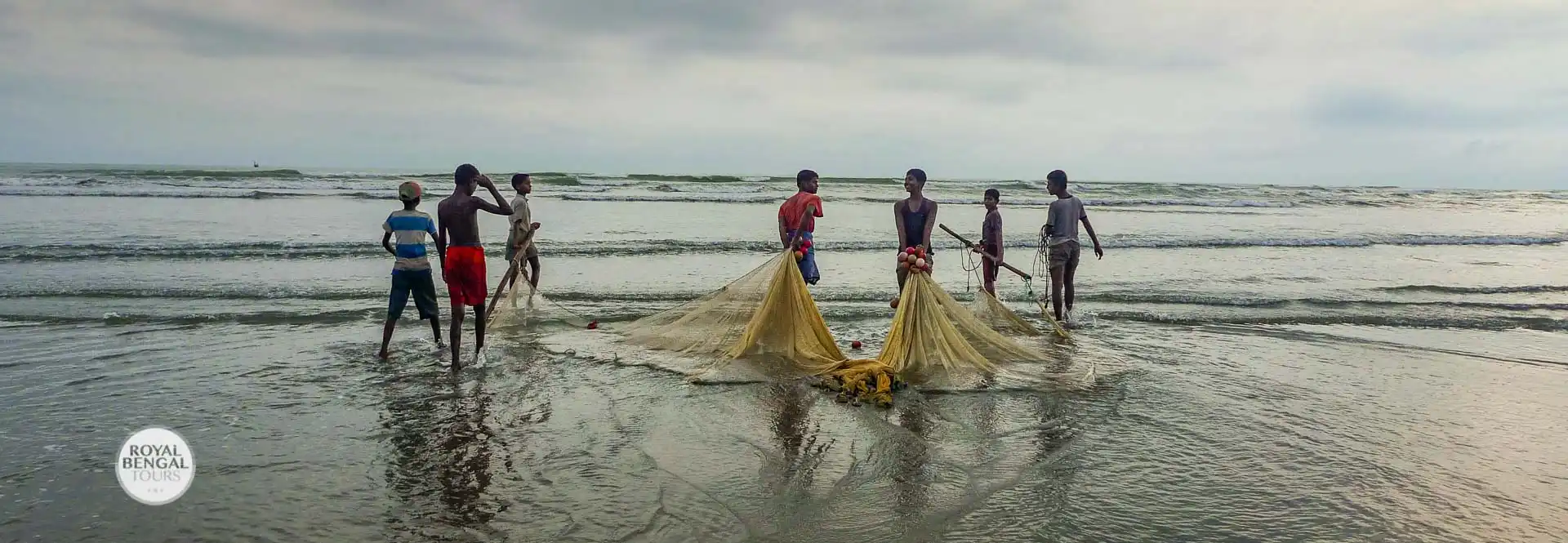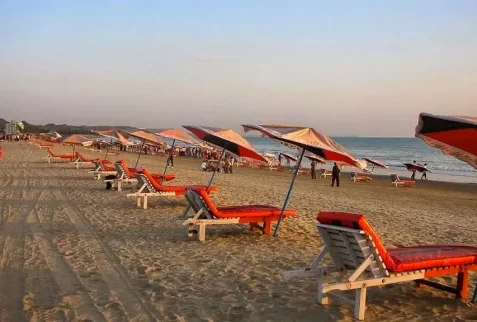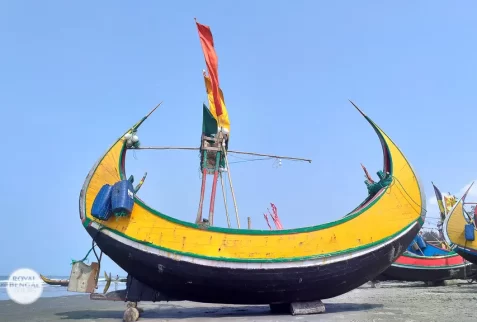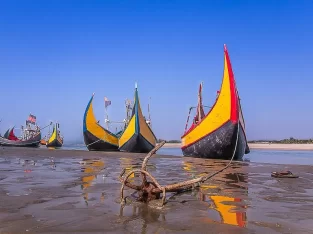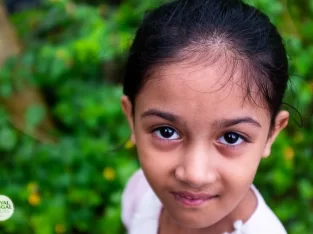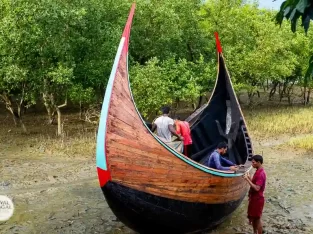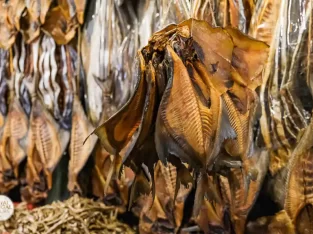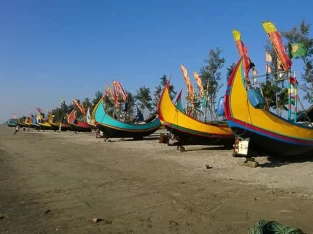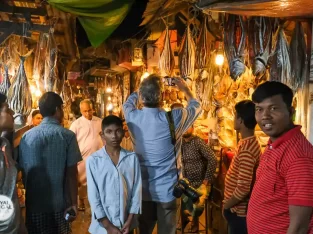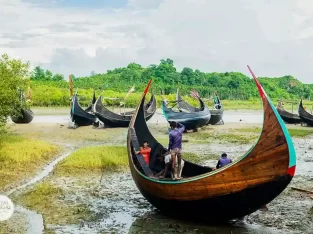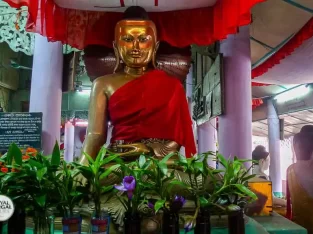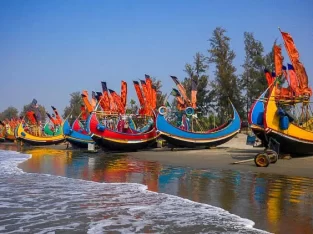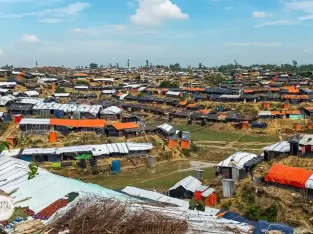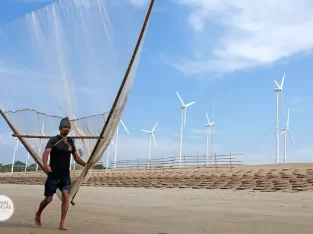South-eastern-most tip of Bangladesh
Teknaf
This small town Teknaf is on Southeasternmost tip of the country, situated on the Naaf River bank and just at the end of the hilly regions of the district. The Naaf River is the natural separator of Mayanmar - Bangladesh, and Mayanmar is just on the opposite bank of the river. The beauty of hills, forests, Wild animals, birds, Naaf River and the beach; makes Teknaf an excellent destination for adventure lovers. The salt fields on the Riverbank are an exciting sight for visitors. Teknaf is the jumping off point for Saint Martin's Island - the only coral island of Bangladesh. All the sea trucks are harbored and makes back and forth day trips to St. Martin's Island every day during the winter (October to early March) season. There are AC and Non-AC bus services to Teknaf from Dhaka, Chittagong and Cox's Bazar. Parjatan Motel 'Netong' is the best available accommodation option for this area, which offers very basic services but safe and secure so far. Netong is own and run by the government, best to make a pre-reservation to avail a room here, which can be done at Parjatan Head (Hotel Abakash is the temporary head office now ) office in Dhaka Mohakhali.
Rohingya Refugees in Bangladesh
Rohingya Refugee camps along the roads on the hills and forests, starting from Ukhiya till to Teaknaf, is darker sides of a moon. We are one of the few tour operators in the country, worked there during the crisis period in 2017 for many national and international agencies of print and electronic media. We have really witnessed the consequences of systematic ethnic cleansing by Burmese militaries, and this humanitarian crisis has rewritten the definition of brutality. Words are never enough to explain the situation and marks had carried by 1.5 million Rohingyas to Bangladesh. We do not offer any tour or excursions to the camps for conventional tourists but who has a valid purpose; we will do everything to bring a ray of light for humanity. We believe that it's not a good feeling to see the lives in the cases without being able to do anything for them. Any researcher, journalists and humanitarian aid workers are more than welcome to contact us for any information, assistance in this regard.
Teknaf Wildlife Sanctuary:
Designated initially as Teknaf game reserve in 1983. December 2009 the Government of Bangladesh enhanced its status to a Wildlife Sanctuary protecting 11,615 hectares of hilly and sloppy lands. This sanctuary is located in Teknaf region of Cox’s Bazar district, comprises a range of steep hills aligned north-south and bordered by the Bay of Bengal to the west and a narrow strip of lowlands and settlements along the Naf river to the south and east, and Inani reserve forest to the north. Coastal communities and ecosystems here are vulnerable to cyclones and tidal surges. The hilly terrain of Teknaf range faces several climate-related hazards every year. In particular heavy rainstorms and localized flash floods and landslides in the wet season destroy crops, infrastructure and damage habitats. Also, more intense dry seasons result in ponds and waterways drying up, and local people face a shortage of fresh drinking water. Restoring a sustainable forest ecosystem to significant areas of the Teknaf watershed hills is vital to improve water and soil retention and enhance the resilience of wildlife and local communities to the threats posed by degradation and climate change. Despite the deterioration, Teknaf Wildlife Sanctuary is still home to a small population of endangered Asian Elephants which comes into regular conflict with local people. Teknaf conservation management community has been working with some others to change attitudes and conserve elephants in a coordinated way. The fauna of the Wildlife Sanctuary has been only partially studied. The wider Teknaf peninsula is home to a diverse fauna: some 260 species of birds including the impressive and globally vulnerable Great Slaty Woodpecker, Grey Peacock Pheasant, and mammals such as Rhesus Macaque and Hog Badger, and is home to the last population of Long-tailed Macaque in Bangladesh. Of particular note within the Wildlife Sanctuary is Teknaf Nature Park, this easily accessed area has shady forest, three small lakes, three hiking trails, an Interpretation centre, and accommodation for visitors.

